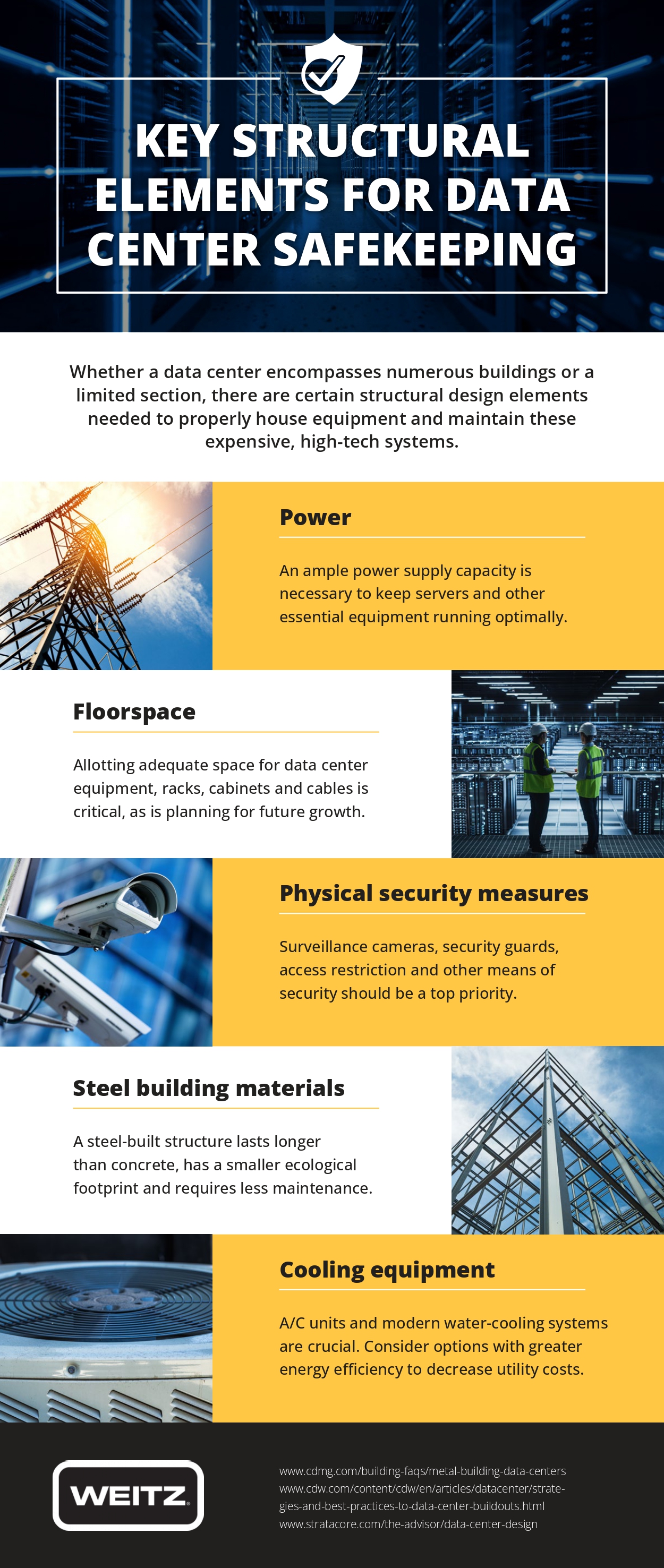In our swiftly advancing digital era, ensuring the security of data is paramount. This underscores the need for careful consideration in the design and construction of data centers. Here, we’ll briefly explore essential structural elements crucial for the optimal functioning of these advanced systems.
Data centers, which specialize in collecting, processing, storing, and sharing data, come in various sizes, ranging from basic server rooms to expansive technological environments. Their primary purpose is to house critical network equipment, ensuring uninterrupted operations for either a single organization or multiple entities concurrently. With continuous advancements in data center systems, the global market is projected to surpass $222 billion in 2023.
Effectively managing an organization’s data and housing these intricate systems necessitate specialized infrastructure. A primary focus is on power, as data centers heavily depend on electricity grids to sustain servers and essential equipment. Inadequate power supply capacity can lead to interruptions, potentially damaging equipment and resulting in costly downtimes. Thus, ensuring ample power accessibility is a top priority when establishing a new data center.
Another crucial structural element is proper cooling equipment. Depending on the size of the structure, relying solely on air conditioning units may not suffice to prevent servers from overheating. Fortunately, diverse cooling solutions, including modern water-cooling systems, aid in regulating heat and enhancing energy efficiency. Optimizing airflow through specialized paneling, barriers, and strategic equipment placement further safeguards these important systems.
Security is a third major consideration, encompassing both physical facility measures and internal network security processes. Robust defense measures are indispensable for protecting sensitive data, involving the implementation of biometric security systems, advanced surveillance cameras, security personal, and strategic access point placement. The use of firewalls, IDSs, and data encryption protocols adds an additional layer of protection to the network.
Lastly, the allocation of necessary floorspace for the date center, both presently and in the future, is vital. Scalability and flexibility are critical considerations as the internet landscape expands in complexity. Even new data centers should be equipped to accommodate future upgrades as needed.
These considerations, along with others, highlight the importance of consulting with a design-builder. For more in-depth information on the key structural elements when establishing a data center, please see the added resource.
Infographic Provided By Aviation Construction Company, The Weitz Company



